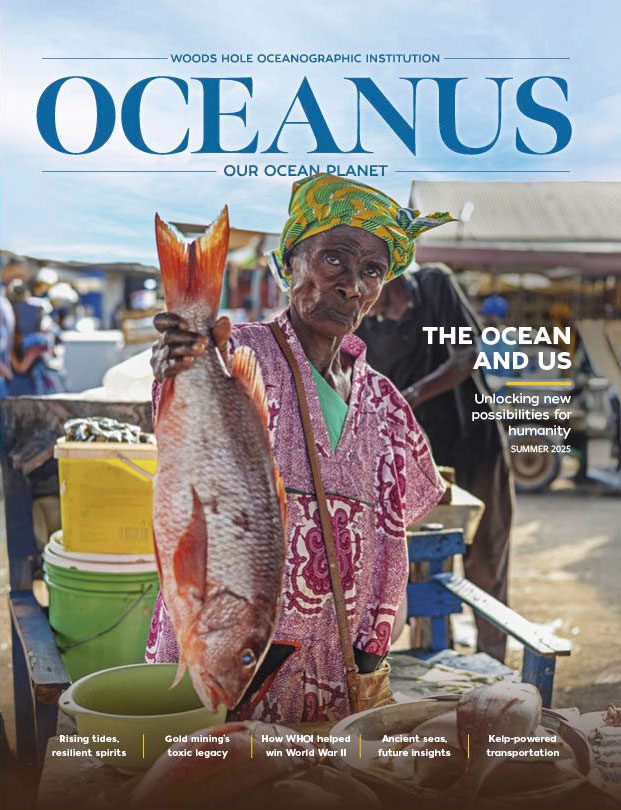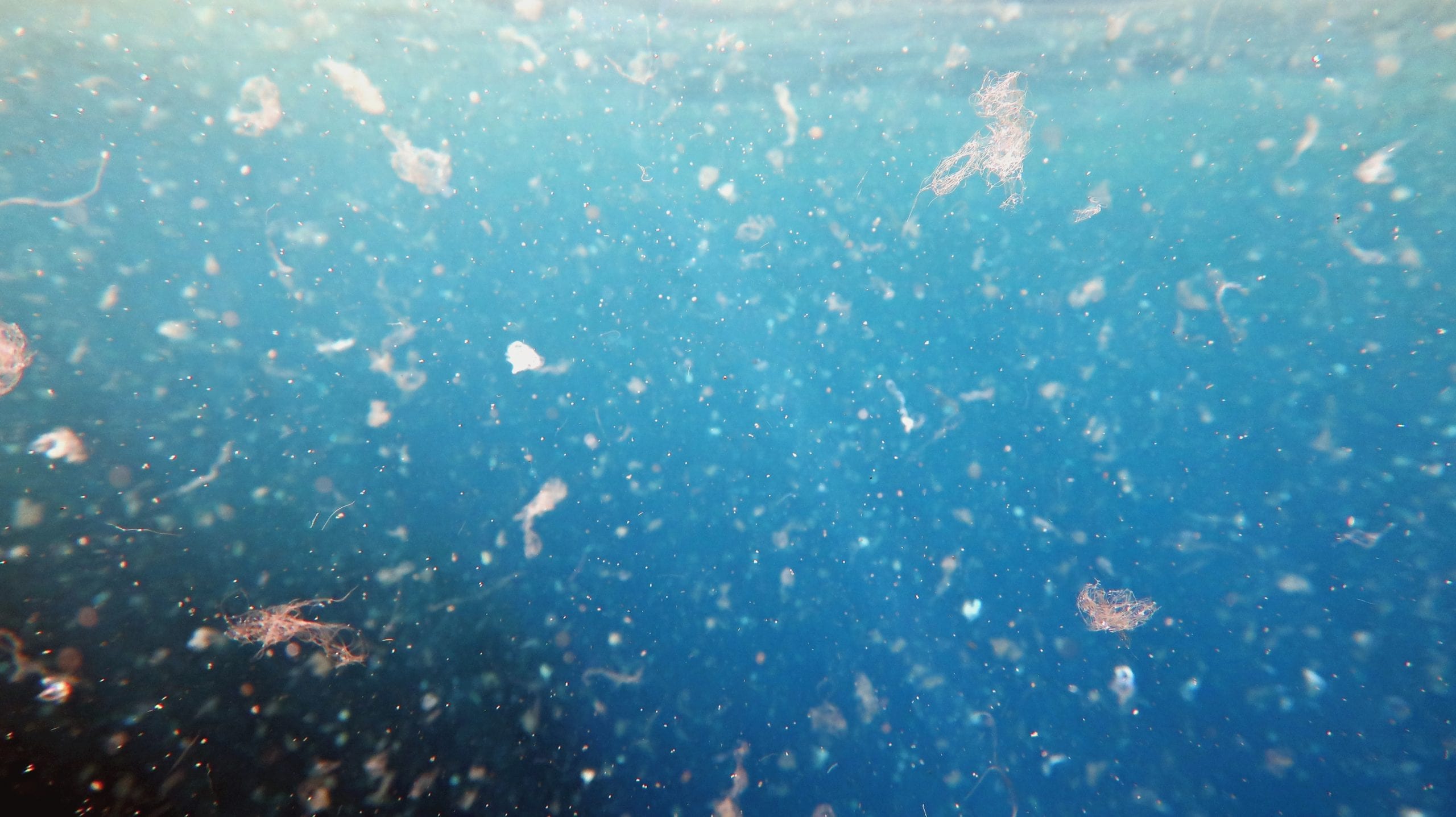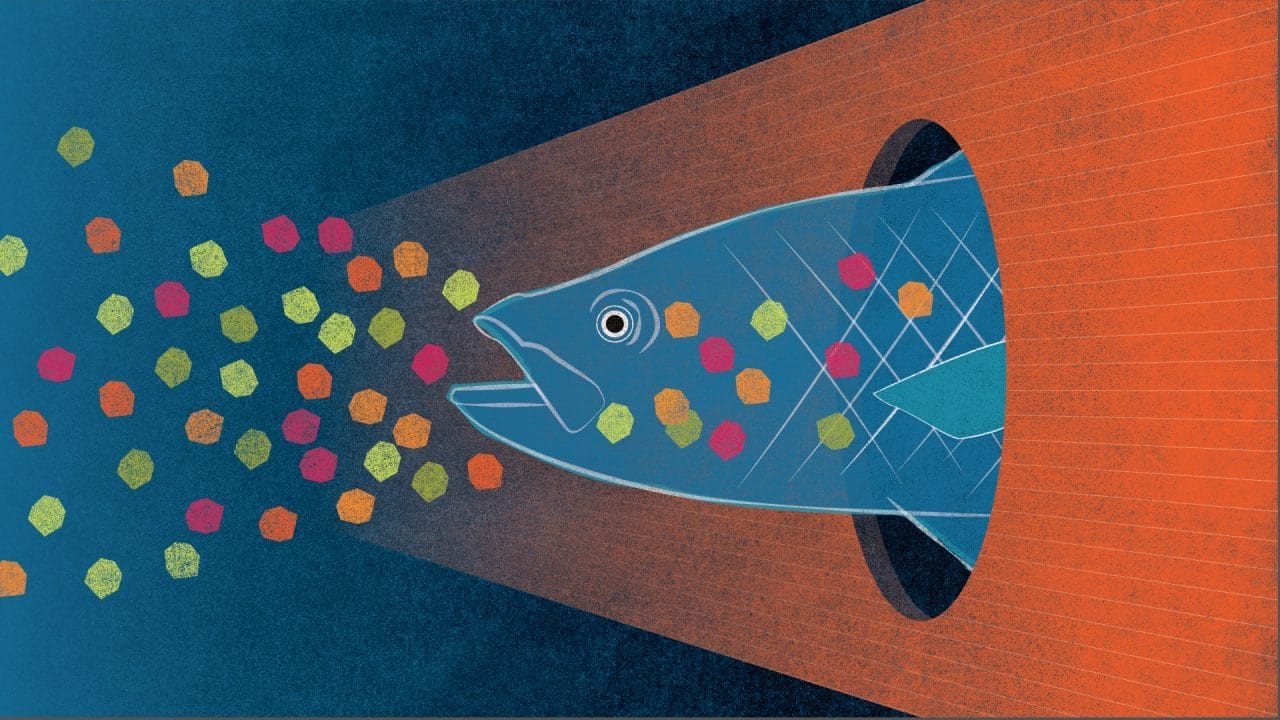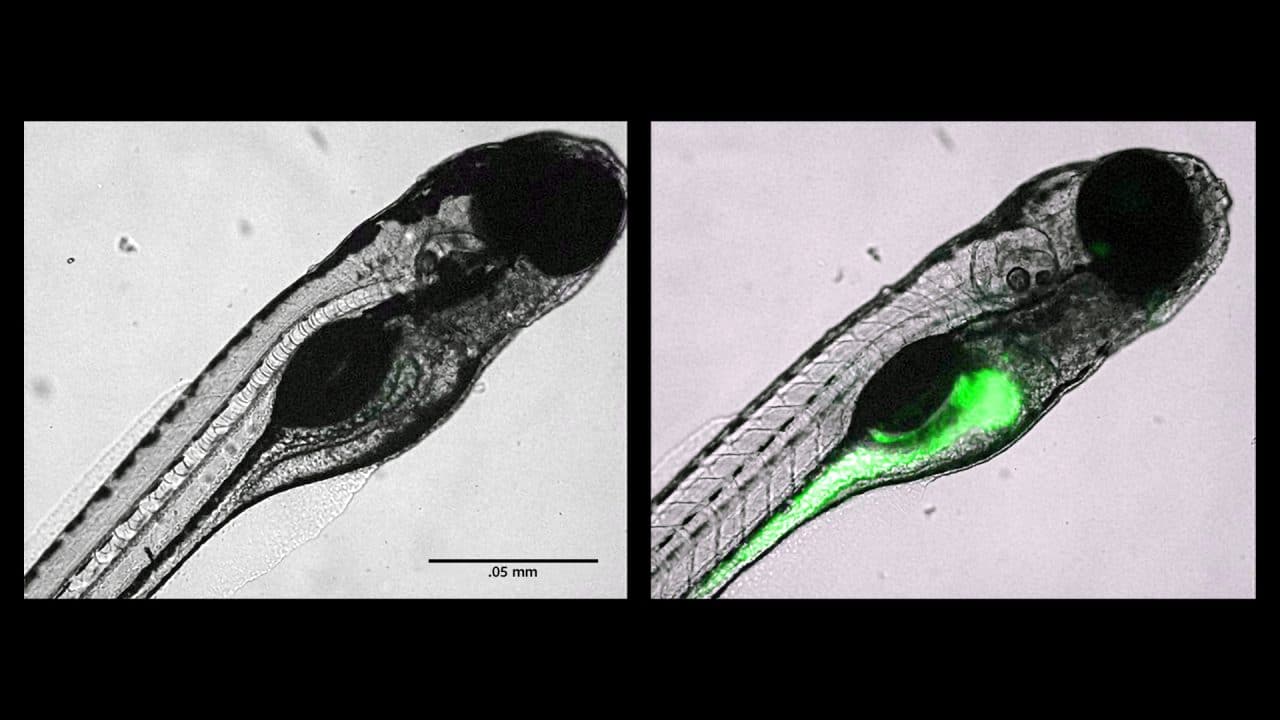How is human health impacted by marine plastics?
WHOI biologist Mark Hahn discusses a recent global plastics study
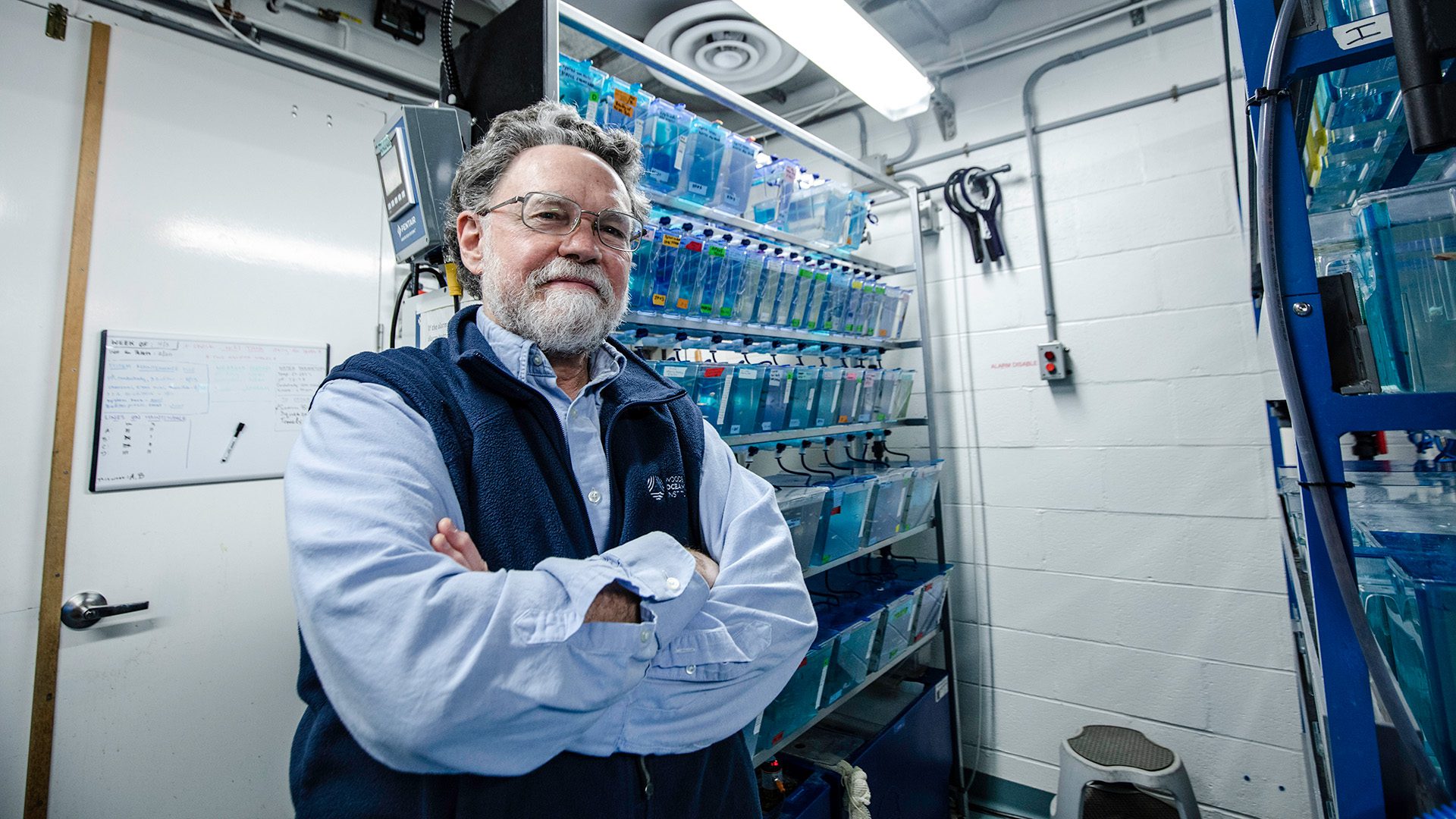
By Amy E. NEvala | April 17, 2023
Each year, an estimated 8 million tons of bags, bottles, discarded fishing gear, and other plastic waste enters the ocean. It’s a problem that threatens the health of humans and marine life, and an issue that attracts the interest of a growing number of researchers worldwide. These partnerships led WHOI senior scientists Dr. Mark Hahn and Dr. John Stegeman to team up with international collaborators to develop a report on ocean plastics aimed for a specific audience: the health and medical community.
This March, after more than a year of collaborative writing, Hahn, Stegeman and three dozen other authors—including WHOI postdoctoral scholar Bryan James and MIT-WHOI Joint Program student Jordan Pitt—completed the 215-page document, The Minderoo-Monaco Commission on Plastics and Human Health report.
The report, sponsored by the Australia-based Minderoo Foundation, the Centre Scientifique de Monaco, and the Prince Albert II of Monaco Foundation, was released at the Monaco Ocean Week conference this spring and subsequently was presented to the World Health Organization. Hahn calls the timing of its release especially important and influential as discussions and negotiations for an international Global Plastics Treaty at the United Nations move forward in Paris this June.
Here, Hahn provides insights into the relevance of the study and how he will remain involved with ocean plastics research at WHOI.
Marine plastics studies have been going on for more than 50 years, before publication of the first paper on this topic in 1972. How is this study unique?
This study attempts to pull together all of the current information on the potential impacts of plastics. It is different from previous reports because it focuses on human impacts and is targeted at the public health and medical communities, as well as the people currently involved in the negotiations for an international treaty on plastics.
It covers not just the impacts of plastic waste but also the impacts over the complete life cycle of plastic, from extraction of the petroleum and other raw materials, through the use of plastics, to their release into the environment. It also reviews the economic and social costs of plastics.
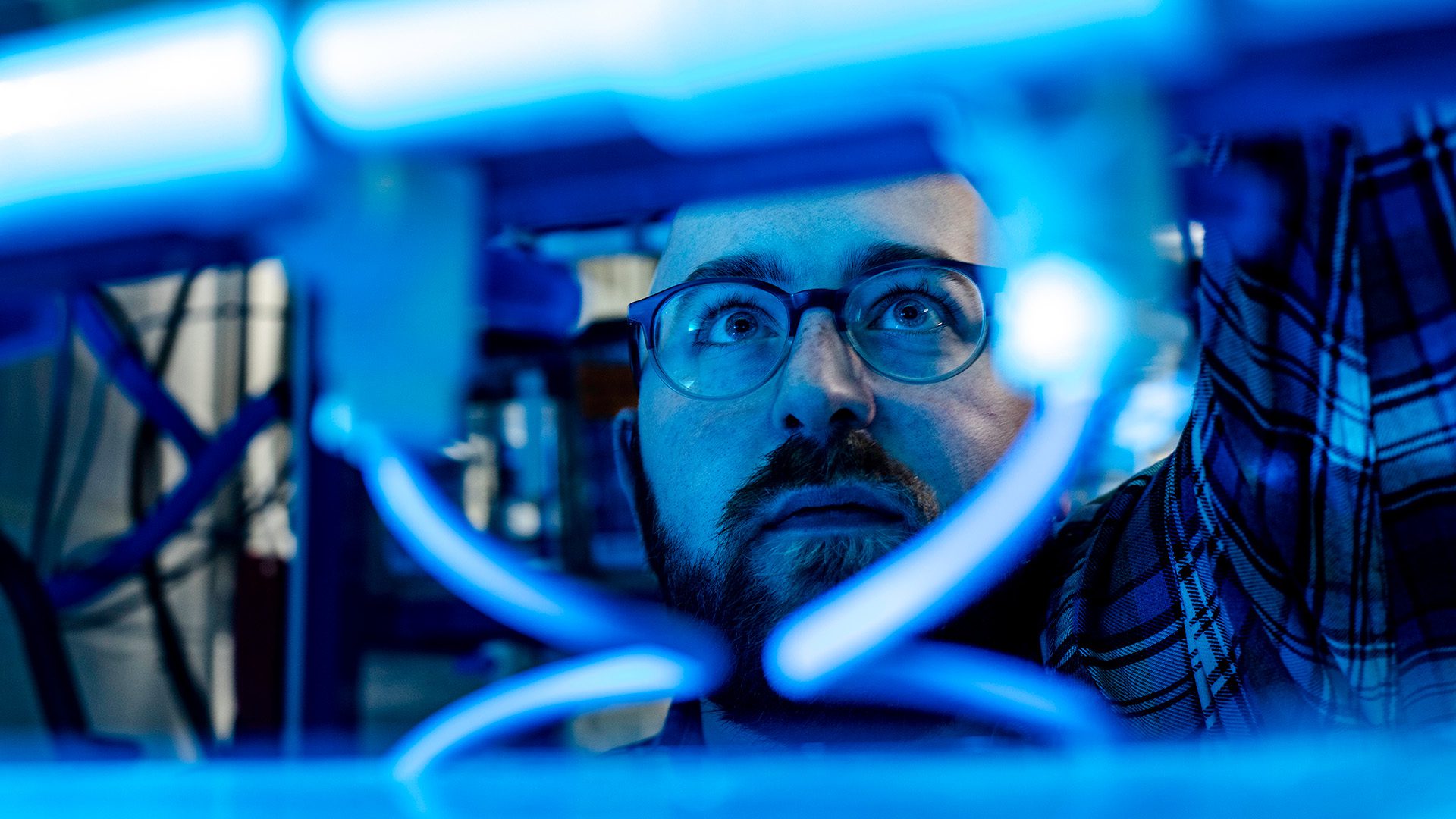
What were the specifics of your involvement with this report?
Dr. Stegeman, a biochemist who studies the effects of natural and human-made pollutants on marine organisms, and I led the team that wrote the Ocean Health section. This involved a series of discussions and writing sessions involving an international team of co-authors, which took place between March 2022 and February 2023.
There are a number of key findings. Any in particular that you want to highlight?
One important finding is that the impacts of plastics on ocean and human health are not limited to those associated with improper disposal but involve all stages of the plastic life cycle, from extraction of the raw materials (especially petroleum), through manufacture, use, and disposal. The impacts occur not just from the plastics themselves but also from the many chemicals that are added to the plastics.
How do plastic and microplastics in the ocean impact human health?
We know that many of the chemicals released during the production of plastics or added to plastics when they are made are toxic and have been linked to a variety of diseases in people.
Many people are also concerned about the potential health impacts of exposure to microplastics and nanoplastics, the small microscopic fragments of plastic that are produced when plastics break down in the environment. We know that people are exposed to microplastics from many sources, including from food (including seafood), drinking water, and inhalation from the air. But the possible health impacts of that exposure are not yet well understood.
How did you personally become interested in the marine plastics issue?
I was 12 in 1970 when the first Earth Day happened and a teenager when I read Rachel Carson’s Silent Spring. I think these experiences set me up to care about the health of our natural environment. I pursued a graduate degree in toxicology from a medical school. For my career I wanted to apply what I had learned in graduate school to the marine environment. I came to WHOI in 1987 to work with Dr. Stegeman. Since then, I’ve been in a position to bridge human and environmental health fields through my interest in marine pollution and its consequences.
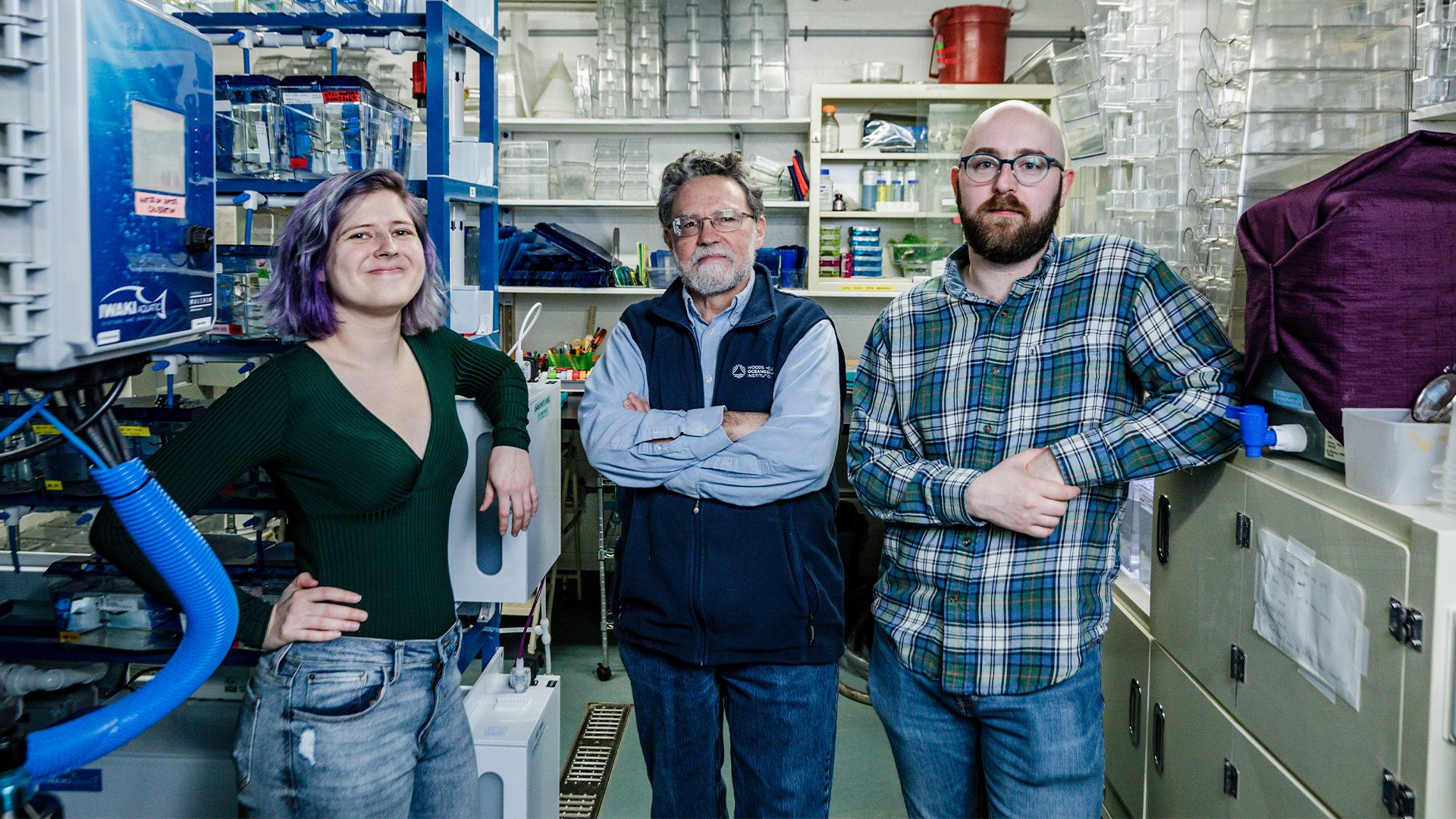
What will be your role in this research going forward?
I lead WHOI’s Microplastics Initiative, which began in 2017 to address the presence of plastics in the marine environment. It continues to grow as more oceanographers and ocean engineers become interested in applying their knowledge to better understand the behavior, fate, and impacts of plastics in the ocean and help identify solutions. I’ll continue to work with my colleagues here and our collaborators around the world to do this.
As a WHOI scientist, and a concerned citizen, what do you hope to see in a global plastics treaty?
The issue of plastics and their impacts on ocean and human health is complex, so I appreciate the difficulty that the negotiators face in crafting a treaty that will be effective in reducing these impacts. Plastics provide many benefits, so the challenge is how to retain the benefits while reducing the unnecessary use of plastics and the overall impacts. My hope is that the treaty will deal not only with the issue of plastic waste, but with the entire plastic life cycle, including production and use.
Hahn and Stegeman’s roles in the Minderoo-Monaco Commission were supported by the Minderoo Foundation as well as by The March Marine Initiative (a program of March Limited, Bermuda), WHOI Sea Grant, and the Woods Hole Center for Oceans and Human Health (funded by NIH/NIEHS and NSF/OCE).
